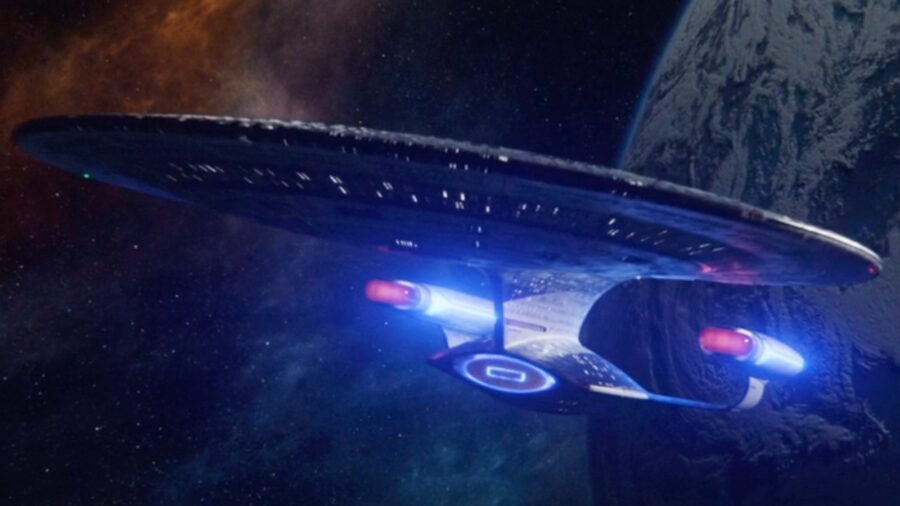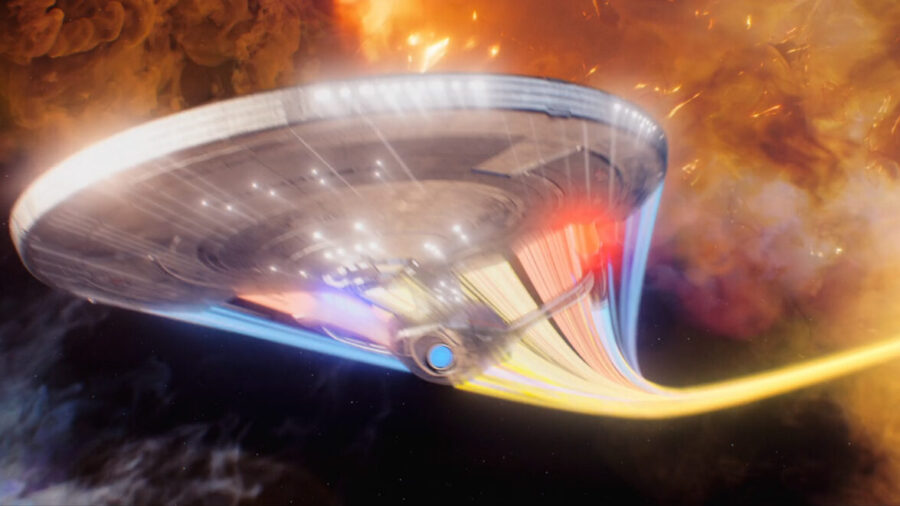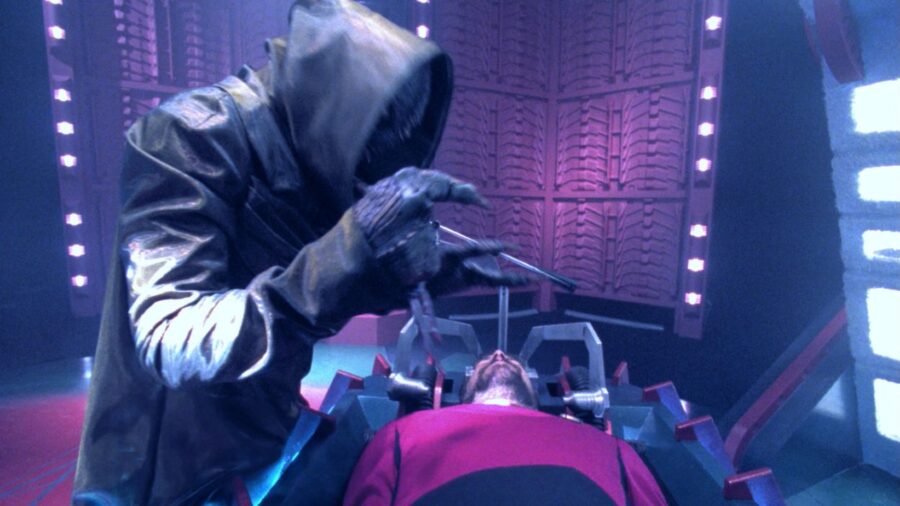What Is Subspace In Star Trek And How Does It Work?

Whenever you start watching a Star Trek episode, it doesn’t take very long before characters start mentioning “subspace.” In fact, the term gets used so often that it eventually sounds like just one more bit of this Paramount franchise’s famous technobabble, but it’s more important than you think: quite simply, without subspace, none of our favorite characters could trek through the stars. Let’s take a closer look and what subspace is, how it works, and why it’s so important.
Subspace has many different functions in Star Trek, but its primary role is to help ships such as the USS Enterprise achieve warp speed.
In Star Trek, the first thing fans should know about subspace is that it exists alongside normal space. Even though the show never defines exactly how everything works, we know that subspace has its own peculiar set of physics that Starfleet and other interstellar organizations have mastered its use. Subspace has many different functions in Star Trek, but its primary role is to help ships such as the USS Enterprise achieve warp speed.
The reason that Star Trek characters require subspace for warp travel is that, with some very notable exceptions, the franchise tries to align with the physics of the real world. Among other things, that means that by themselves, starships are unable to travel faster than light. In order to go to warp, these ships must generate special subspace bubbles.
In most of the starships we see onscreen, it’s the ship’s nacelles that help generate this subspace bubble. When Captain Picard orders the ship to go to warp, the powerful nacelles of the starship begin to generate high-energy plasma which, in turn, creates the bubble around the ship.
Star Trek has shown us that subspace has other uses as well, with one of the main uses being interstellar communication.
The ship remains safely in the bubble while it travels faster than light, which is how all these starships zip around the universe without technically violating the rules of physics.

Of course, Star Trek has shown us that subspace has other uses as well, with one of the main uses being interstellar communication. Vessels exploring the “final frontier” are, by definition, very far away from both Federation headquarters and other starships, and it would normally be impossible for these ships to communicate over great distances.
However, characters can use networks of subspace relays to facilitate this communication, like when the Voyager used a network of Hirogen subspace relays in the Delta Quadrant to communicate with Starfleet in the Alpha Quadrant.
One of the more tantalizing (if frustrating) qualities of Star Trek is that for all the times we hear about it, we don’t get a good look at what the interior of subspace actually looks like. In Star Trek: The Next Generation, Geordi LaForge once explained that subspace is like “a huge honeycomb with an infinite number of cells,” but we never see that fully visualized in the various series and movies.
In fact, the closest thing we get to a visualization of subspace is the occasional glimpse of vibrant blue and black colors in space, usually when ships use means other than warp drive to enter subspace corridors.
Subspace Villains In “Schisms”

In all of Star Trek history, we have only had one episode that properly explored the concept of exotic aliens that exist within subspace. In the Star Trek: The Next Generation episode “Schisms,” our characters discover solanogen-based lifeforms that accidentally get drawn to the USS Enterprise, and they waste no time conducting freaky body horror experiments on Commander Riker and other members of the crew.
Eventually, the intrepid crew seals the rupture that letting the aliens onto the ship. However, this episode remains powerful proof that every time starships go to warp, they are traveling through an area of space filled with creepy aliens who won’t hesitate to detach and reattach the limbs of the helpless crew while they sleep.












